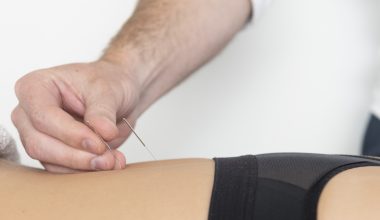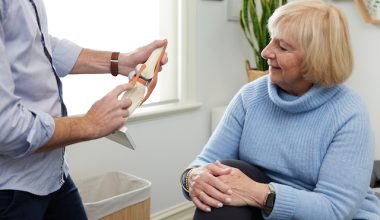Tele Physiotherapy (Telephysio) is designed to be simple and accessible, often requiring minimal equipment.
While many exercises can be done using body weight or household items, having certain tools on hand can help you get the most out of your virtual physiotherapy sessions.1. Essential Equipment for Telephysio:
Device with Camera & Microphone:A laptop, tablet, or smartphone with a camera and microphone is necessary for video consultations.
A stable internet connection ensures smooth communication and real-time feedback. Open, Safe Space:
Clear a small area (~2m x 2m) where you can move freely.
Ensure the space is well-lit so the physiotherapist can properly observe your movements.
Comfortable Mat or Carpeted Area: A yoga mat or exercise mat provides cushioning for floor-based exercises. If you don’t have a mat, a carpeted area can work as long as it offers enough support.
Sturdy Chair or Wall Space: A sturdy chair can be used for balance exercises or seated movements. A wall can help with posture drills, stretching, and alignment work.
2. Optional Equipment That Can Enhance Your Session: While not essential, these items can help expand your exercise options and provide more targeted rehabilitation:
Resistance Bands or Therabands: For strengthening and mobility exercises.
Small Dumbbells or Household Alternatives: Cans or water bottles can work for light resistance.
Foam Roller or Massage Ball: Useful for self-myofascial release and mobility work.
Exercise Ball (Swiss Ball): For core stability and balance exercises.
Towels or Yoga Straps: Helpful for stretching and flexibility training.
Pillows or Cushions: To support the body during certain postures or stretches.
3. Household Alternatives: If you don’t have exercise equipment, household items can serve as substitutes:
- Water bottles or canned goods for light weights
- A rolled-up towel for foam rolling or stretching
- Chairs, steps, or stairs for step-ups and balance work
- Backpacks filled with books for added weight in strength exercises
4. Preparing for Your Telephysio Session: Test your camera and microphone before the session. Wear comfortable clothing that allows full range of motion. Position your camera so the physiotherapist can see your whole body during exercises. Keep water nearby and ensure the space is free from tripping hazards.
5. No Equipment? No Problem! Physiotherapists are trained to adapt exercises using bodyweight movements and household items. If you have no formal equipment, they can still suggest some options for how you can do exercises for:
- Strengthening and mobility exercises
- Postural correction and ergonomic advice
- Breathing techniques and pain management strategies
- Functional movement training
Telephysio is designed to be flexible and accessible. While some basic equipment can enhance your rehabilitation experience, it’s not a necessity. Your physiotherapist will tailor your program to the resources you have available, ensuring you can still make progress from the comfort of your home. If you’re unsure about what you need for your session, ask your physiotherapist—they can offer guidance based on your specific treatment plan.















